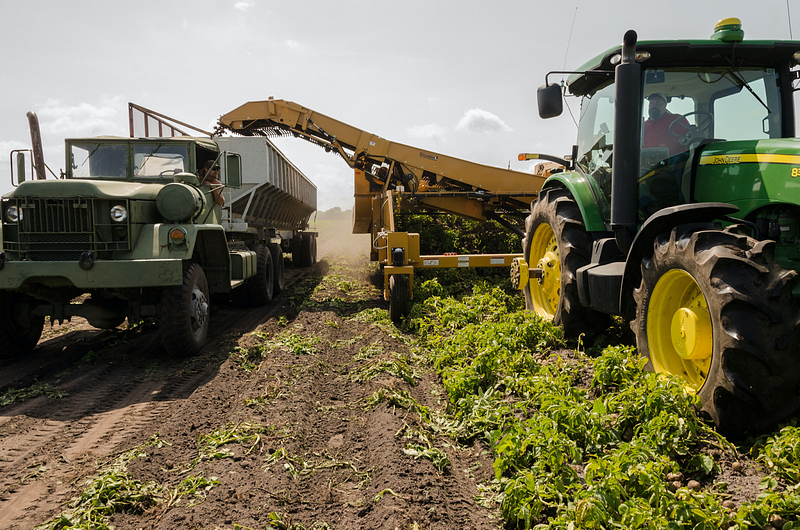Zoonotic Disease: What is it?
“Please follow the SOP, remember to wear your face mask whenever you are out.”

“Please follow the SOP, remember to wear your face mask whenever you are out.”
“How could you forget to bring your hand sanitizer along?”
Since then, we have been bombarded with the issues of COVID-19, either when we first wake up in the morning or before we go to bed at night. Whether it’s at dinner, watching TV, or even conversation between pals, COVID-19 seems to be the topic on everyone’s mind these days.
A year and a half later, we are still in dire straits and the situation seems to be worse than ever, especially with the emergence of mutant strains. Its arrival has not only cost many lives, caused discontent among people around the world, and even brought around political uprisings in several countries. So, what got us to where we are today?
Contrary to popular belief, COVID-19 is not the first of its kind. In fact there have been other compelling and disastrous zoonoses outbreaks over the past few decades. Some other well-known zoonotic diseases include zoonotic influenza (Bird Flu), Ebola virus, severe acute respiratory syndrome (SARS), Middle East Respiratory Syndrome (MERS), pandemic human influenza (H1N1).
What is Zoonotic Disease?
Any disease or infection that is naturally transmitted from vertebrates to humans is referred to as zoonotic disease. There are currently over 200 known zoonotic diseases in the world. Zoonotic diseases are responsible for a significant portion of new and existing human diseases. In fact, scientists estimate that 60% of known infectious diseases and 75% of emerging infectious diseases are zoonotic.
Apart from these emerging pandemics, there are some other so-called “neglected zoonoses” that seem to be constantly present in (mostly impoverished) populations, but have received relatively little attention or resources from the global community. Anthrax, bovine tuberculosis, brucellosis, rabies, Japanese encephalitis, leptospirosis, rabies, trypanosomiasis are some of the significant yet neglected zoonoses that are prevalent in underdeveloped countries.
Why are Zoonotic Diseases Becoming More Prevalent?
While the emergence of a pandemic is sometimes referred to as a “black swan” (a low-probability event), it is definitely predictable from the way people obtain food, trade livestock, and destroy natural habitats. Meanwhile, neglected zoonotic diseases exist in developing countries that are undergoing challenging problems like poverty, unhygienic conditions, limited infrastructure in sewage treatment, socio economic instability, low education levels, social injustice, and environmental destruction. This has led to two million deaths per year in middle to low income countries.
Zoonotic disease is spread to humans by bacteria, viruses, or parasites from animals. Food-borne, air-borne, and water-borne transmissions are the most common modes of transmission. Due to the increasing human-animal interactions in agriculture work, companionship such as pets, and the interaction with animals in the ecosystem, zoonotic diseases are now becoming more widespread.
“COVID-19 is not the first zoonosis, nor will it be the last” — United Nations
According to Inger Anderson, the Executive Director of the United Nations Environment Programme (UNEP), the evidence has clearly shown that if humans continue to exploit native wildlife and destroy their habitats, the globe will suffer dozens of new similar diseases that could spread from animals to human beings in the future. As the world has seen in the past year and a half, the COVID-19 pandemics catastrophic to livelihoods and economic activities. To minimize potential recurrences of this disease, we must be much more committed in protecting our global ecosystem.
Major Risk Factors of Zoonotic Diseases
Recently, it has been suggested that the emergence of zoonoses is far more likely caused by human activities. Interaction with the wildlife, plantations and poultries can in turn result in unpredictable outcomes. The following are several factors proposed by researchers that may have led to the rise of zoonoses.
The increasing human demand for animal protein has altered the food chain supply. Human demand for animal-based food has also prompted the intensification and industrialization of livestock production. Meat production has increased by 260% in the past 50 years. The expansion done to allow more meat production has devastating effects on the environment and in turn leads to an increase in infectious diseases. Dams, irrigation systems and factory farms, all part of food production, are linked to 25% of infectious diseases in humans.
Unsustainable farming in developing countries caused by mismanagement is more likely to contribute to zoonoses. Animal farms are notoriously overcrowded, it is also a breeding ground for infectious diseases.
Along with contemporary strenuous industrialisation and rapid urbanization, industries are much more likely to invade and exploit wildlife’s ecosystems. This directly causes animals to lose their homes and habitats, forcing them to flee.
The magnitude of climate change is forcing wildlife to leave their natural habitats. Climate change not only brings host animals closer to human beings, but it also serves as a breeding ground for pathogens. As animals flee their homes due to climate change (for example forest fires or to get to colder land), species that would usually not interact come in contact with each other, causing pathogens to spread to a new host. During the process of fleeing, animals may come into contact with humans and thus spread the pathogen to human beings.
In fact, the use and trade of animals may significantly raise the direct contact between animals and humans across the supply chain, raising the chances of the transmission of zoonotic diseases. All the risk factors mentioned above are closely related. The majority of risk factors seem to be caused by human personal interests, failing to acknowledge the importance of coexisting with nature. For example, recreational hunting or wildlife consumption is wildly popular among upper class individuals as it allows them to show off their social status. Some unscrupulous merchants will even conduct immoral research on wild animals for commercial interests, or use certain parts of wild animals as decorations for commodities. These activities can eventually lead to zoonoses through a variety of mechanisms such as direct contact or indirect contact with surfaces infected with pathogenic bodily fluids. Pathogens can also be spread by vectors, raw or undercooked food, or contaminated water.
However, it is important to note that some communities have to rely on hunting for survival, not to show off their social status.

Can We Actually Prevent the Spreading of Zoonotic Disease?
The prevention of zoonotic diseases varies based on the pathogen; fortunately, some common practises are reported to be important in minimizing risk at the community and household levels.
The following ways are some of the simple yet effective that citizens can implement to prevent and control the outbreak of zoonotic diseases.
As mentioned earlier, zoonotic diseases are not only transmitted through pathogens, but can happen through food products. As consumers, we have the obligation to learn and practice the principles of food safety. We have to be mindful of the possibility of foodborne illnesses which can bring severe consequences to public health. By handling and cooking food products in appropriate conditions such as temperature and sterility, we can avoid different types of foodborne illnesses like salmonella and tuberculosis.
Drinking hygienic water and choosing appropriate home water treatment systems are also important in preventing the invasion of infectious agents such as cholera into the human body.
Cultivating habits of hand sanitization and regular hand washing could help to reduce the spread of zoonotic disease in the community. It is critically important to carry out necessary hygiene practices like hand washing or sanitizing after we have had close contact with animals or have returned home from outdoor activities.
In the report ‘Preventing the next pandemic — Zoonotic diseases and how to break the chain of transmission’ by United Nations Environment Programme, It was stated that most initiatives to counteract communicable diseases were reactive rather than proactive. Instead of exerting measures to prevent the emergence of zoonoses, such as emphasising the health systems, land management, policy makers seem more likely to wait for windfalls ( to take action only after things have happened). Additionally, it is obvious in developing countries, where a lack of resources is a major problem for disease control. Zoonotic diseases are infectious, and when an outbreak happens in a developing country they may lack the resources to effectively quarantine infected individuals or even identify said individual. Houses are often overcrowded, giving way for the spread of diseases like tuberculosis.
Mankind has an obligation to work cohesively, collaboratively, and to facilitate collective actions to protect global health. Only then will we be capable of promoting healthy living by defending ourselves from zoonotic diseases. This goal is attainable by putting together a little effort in our everyday routines.
How Countries Can Work Together to Prevent the Next Outbreak?
From ancient times to the present, whether it be the Black Death, that wiped out a third of Europe’s population, or COVID-19 which has claimed more than 4 million lives, the global community needs to pay attention to the matters of zoonoses.
To prevent something from happening, the most fundamental way is to raise awareness of it. Educational institutions, government agencies and some other related organizations should consider incorporating the knowledge about zoonotic disease into citizens’ daily lives to increase public awareness of zoonotic diseases. Were it not for the difficulties that the COVID-19 outbreak has brought, we might still be ignorant of zoonotic diseases.
To prevent further destruction of natural ecosystems and biodiversity, policy makers should take immediate action to subsidise sustainable agricultural practises, as well as develop new measures to promote food security and citizens’ livelihoods. Institutional reform is needed to curb climate change and promote a greener method for not just agriculture, but across all industries.
“If humanity gives nature a chance to breathe, it will be our greatest ally as we seek to build a fairer, greener and safer world for everyone.” — Inger Anderson, the Executive Director of UNEP

People working in the poultry breeding and poultry-related industries should be mandated to get vaccinated against influenza. Better health and hygiene practices should be enforced within said industries too.
To reduce the risk of future zoonoses, both wildlife and poultry meat, and also where it is marketed, should be held to the same hygienic standards. Moreover, food safety regulations must be enacted throughout the food supply chain, including hunted wildlife and raised poultry. To reduce the risk of disease transmission, animal welfare standards for livestock placement and transportation should be established throughout the supply chain.
There’s also no single individual, organisation, or industry that can tackle issues at the animal-human-environment interaction. The “One Health” approach is a means of implementing programmes, policies, legislation, and fieldwork that work collaboratively with diverse sectors such as human beings, animals, plants, and their shared environment that aims to improve the overall health outcomes.
The outbreak of COVID-19 has taught the world an important lesson; it has cost us on all levels, lives were lost, progress took a big hit, the economy of most countries has suffered great losses. As a matter of fact, prevention seems to be more cost-effective than intervention.
As the global population grows, so does the interaction between humans and animals, posing a significant threat to the spread of zoonoses. While it is impossible to stop people from consuming animal products, humans have the obligation to be aware of the link between environmental health and human health. Every human being on the planet is responsible for conversing and constructing preserving ecosystems.
[Written by: Li Yi Xin]
References:

